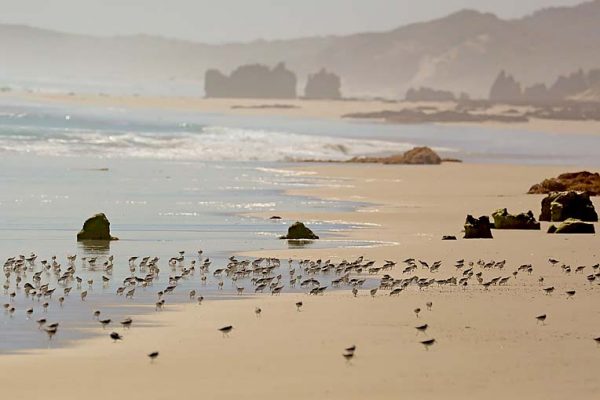
TODAY’S World Wetlands Day celebrations come just shy of a year since the declaration of the Glenelg Estuary and Discovery Bay (GEDB) as a Ramsar site.
Australia’s 66th wetland of international importance – listed as Ramsar site number 2344 on February 28 last year – spans south west from Nelson along the Victorian coastline.
Stakeholders have highlighted World Wetlands Day as the perfect time to celebrate the site and review its progress since the Ramsar designation.
Glenelg Hopkins Catchment Management Authority waterways and biodiversity executive manager Chris Solum said the organisation was thrilled with the strong relationships that continue to develop for managing the wetlands located within the important site.
“I am impressed by the projects hitting the ground, with more than 2350 hectares cleared of woody weeds since Ramsar designation,” Mr Solum said.
“Final designs for raising the level of Beach Road and replacement of Simson’s Landing jetty are also under way.”
The GEDB wetlands stretch across more than 22,000 hectares of land along 50km of coastline, including the Lower Glenelg National Park, Discovery Bay Coastal Park and the Nelson Streamside Reserve.
Within the site are the 75km long Glenelg Estuary, a beach and dune system and freshwater wetlands.
The area has important recreation and tourism values and, for the Traditional Owners, the people of the Gunditjmara Nation, it is valued as an important cultural site, with significant food sources and meeting places.
It is a critical habitat for a rich diversity of native birds, fish and invertebrates, including several threatened species.
The site supports 95 waterbird species including the endangered Australasian bittern, great knot and Eastern curlew.
It provides food, spawning grounds and nurseries for a range of fish including 14 native species, such as the Yarra pygmy perch and a path for species which migrate between the region’s salt and fresh waters.
Like many native orchids, the Maroon Leek and Swamp Greenhood orchids are battling extinction, both suffering a major decline in both range and abundance.
There are just seven populations of Maroon Leek orchids containing about 1000 plants.
Recent survey results at the Ramsar site show 126 nationally threatened Maroon-leek orchids, 350 Swamp Greenhood orchids.
In addition, 84 Ancient Greenling dragonflies (Hemiphlebia mirabilis) were spotted in surveys in the wetlands in late 2018.
“That’s a great result, when you understand the GEDB wetlands support more than 1pc of the total population and possibly as much as 5pc of the population of the endangered Ancient Greenling,” Ramsar site coordinator Gavin Prentice said.








